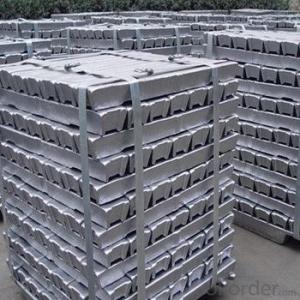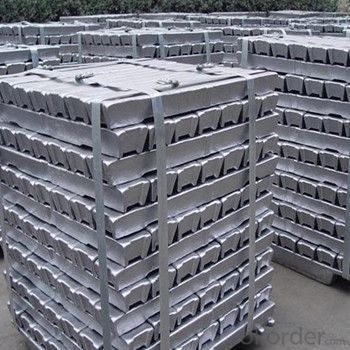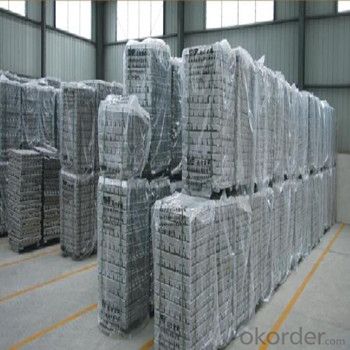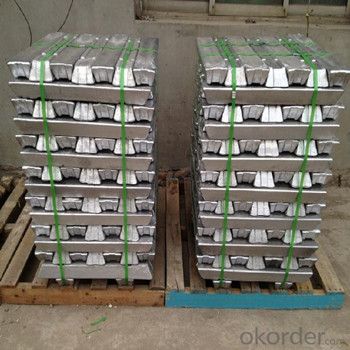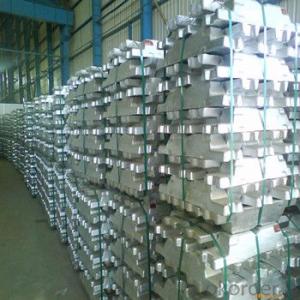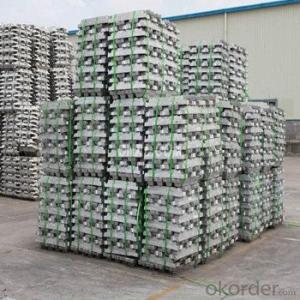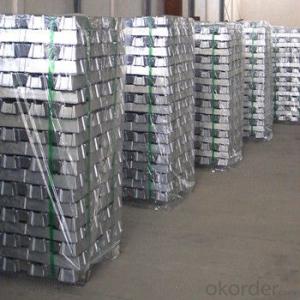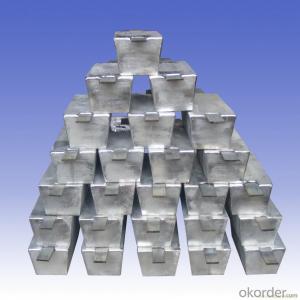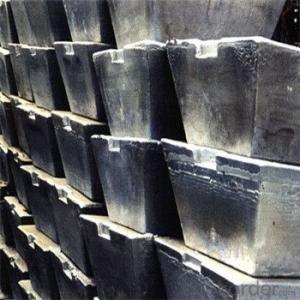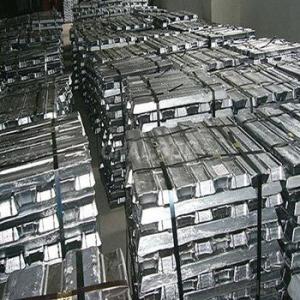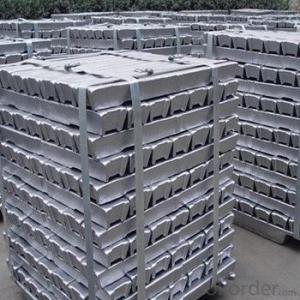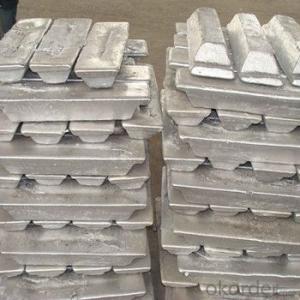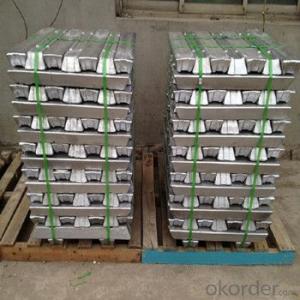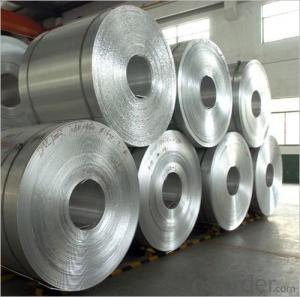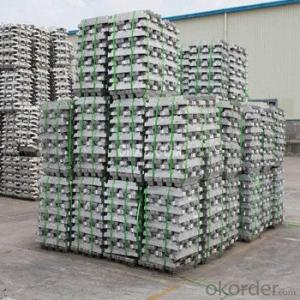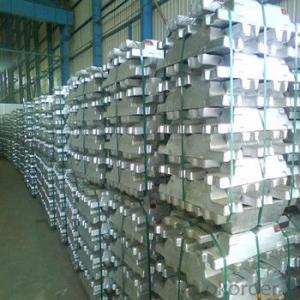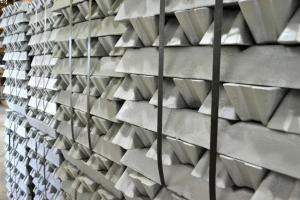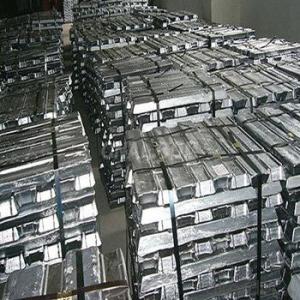Aluminum Pig/Ingot With High Purity 99.7%
- Loading Port:
- China main port
- Payment Terms:
- TT OR LC
- Min Order Qty:
- 1000 m.t.
- Supply Capability:
- 100000 m.t./month
OKorder Service Pledge
OKorder Financial Service
You Might Also Like
Pure Aluminum Pig/Ingot Used for Industry
1.Structure of Aluminum Pig/Ingot
A material that has been cast into a shape in order to be transported and processed easier than in an unprocessed form. An ingot is typically rectangular in shape, which allows it to be stacked. Ingots are most commonly associated with metals, with ingots of gold held in the vaults of banks and brokerages being popular images.
Aluminum Ingot is with the AL as the main chemical composition.Aluminum Ingot is used for industry,such as automobile,pinning and weaving,electron broadly and so on. Aluminum Ingot has the following advantages: easy control and operation, fast melting.
2.Main Features of the Aluminum Pig/Ingot
•High Purity
•Easy control and operation
•High strength
•Fast melting
•Competitive price
•Best Service
3.Aluminum Pig/Ingot Images
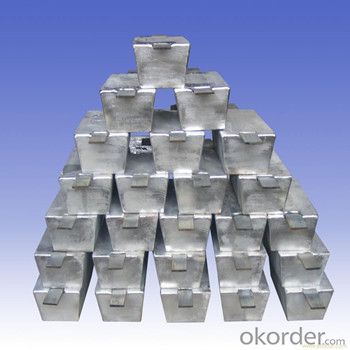
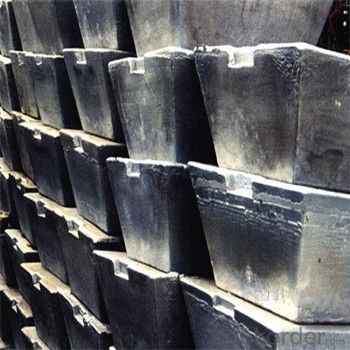
4.Aluminum Pig/Ingot Specification
Grade | Chemical Composition % | |||||||||
Al≥ | impurities ≤ | |||||||||
Si | Fe | Cu | Ga | Mg | Zn | Mn | others | Sum | ||
Al99.9 | 99.90 | 0.50 | 0.07 | 0.005 | 0.02 | 0.01 | 0.025 | - | 0.010 | 0.10 |
Al99.85 | 99.85 | 0.80 | 0.12 | 0.005 | 0.03 | 0.02 | 0.030 | - | 0.015 | 0.15 |
Al99.7 | 99.70 | 0.10 | 0.20 | 0.010 | 0.03 | 0.02 | 0.030 | - | 0.030 | 0.30 |
Al99.6 | 99.60 | 0.16 | 0.25 | 0.010 | 0.03 | 0.03 | 0.030 | - | 0.030 | 0.40 |
Al99.5 | 99.50 | 0.22 | 0.30 | 0.020 | 0.03 | 0.05 | 0.050 | - | 0.030 | 0.50 |
Al99.00 | 99.00 | 0.42 | 0.50 | 0.020 | 0.03 | 0.05 | 0.050 | - | 0.050 | 1.00 |
5.FAQ of Aluminum Pig/Ingot
We have organized several common questions for our clients,may help you sincerely:
①How about your company?
A big and famous and professional manufacturer & supplier of Aluminum Pig/Ingot, is one of the one of the large-scale professional investment Aluminum Pig/Ingot production bases in China.It have focuses on producing the Aluminum Pig/Ingot production for many years and gotten rich experience.Annually lagrge amount of Aluminum Pig/Ingot production are exported to markets in Europe,America and Japan. The quality and service have also gotten OEM service is available according to customer’s requirements.
②How to guarantee the quality of the products?
We have established the international advanced quality management system,every link from raw material to final product we have strict quality test;We resolutely put an end to unqualified products flowing into the market. At the same time, we will provide necessary follow-up service assurance.
③How long can we receive the product after purchase?
In the purchase of product within three working days, We will arrange the factory delivery as soon as possible. The pecific time of receiving is related to the state and position of customers.Commonly 7 to 10 working days can be served.
- Q: What are the different machining techniques for aluminum ingots?
- Aluminum ingots can be machined using various techniques to achieve different results. Some commonly used techniques include: 1. Turning: To create desired shapes or sizes, a cutting tool is employed to remove material from the surface of the aluminum ingot. This technique is commonly applied to produce cylindrical parts like rods or shafts. 2. Milling: By using a rotating cutting tool, material is removed from the surface of the aluminum ingot to create different shapes and features such as slots, pockets, and complex contours. 3. Drilling: This technique involves the creation of holes in the aluminum ingot using a rotating cutting tool. Holes of various sizes and depths can be achieved through this method. 4. Grinding: An abrasive wheel is utilized in this machining process to eliminate material from the surface of the aluminum ingot. Grinding is commonly employed to attain a smooth and precise surface finish. 5. Boring: To enlarge an existing hole in the aluminum ingot, a single-point cutting tool is used in this machining process. Boring is often used to create holes with larger diameters. 6. Sawing: The aluminum ingot is cut into desired lengths or shapes using a saw blade in this machining technique. Sawing is frequently utilized to divide aluminum ingots into smaller pieces for further processing. 7. Lathing: In this machining technique, the aluminum ingot is rotated while a cutting tool is employed to remove material from its surface. Lathing is commonly used to create symmetrical parts like cones or spheres. These are merely a few examples of the numerous machining techniques available for working with aluminum ingots. The choice of technique depends on the desired shape, size, and surface finish of the final product.
- Q: How is aluminium ingot made?
- Aluminium is a silvery white metal, second only to oxygen and silicon in the earth's crust, and ranks third. The density of aluminum is small, only 34.61% of iron and 30.33% of copper, so it is also called light metal. Aluminum is the world's output and consumption of ferrous metals only next to steel. The density of aluminum is only about 2.7103g/cm3, about 1/3 of the density of steel, copper or brass.
- Q: Can aluminum ingots be customized for specific applications?
- Yes, aluminum ingots can be customized for specific applications. Aluminum is a versatile material that can be alloyed with other elements to enhance its properties such as strength, corrosion resistance, and thermal conductivity. By carefully selecting the alloy composition and processing techniques, aluminum ingots can be tailored to meet the specific requirements of various applications ranging from automotive parts to aerospace components.
- Q: What is the difference between aluminium ingot YL112 and YLD112?
- YLD102 is the 102 grade aluminum die casting forging, die casting aluminum YL102 is 102 grade, three digits behind the first said alloy series, 1 aluminum silicon alloy, 2 aluminum copper alloy, 3 aluminum magnesium alloy, 4 aluminum zinc alloy and so on, after the two representatives of the serial number,
- Q: Aluminum scrap and aluminum ingot in the intermediate frequency aluminum furnace, which is more energy saving?
- Better slag, but take good time
- Q: How much is a ton of aluminium ingots now?
- Futures: the Fed announced interest rate hike, the dollar frustrated, overnight aluminum rose $23 to $1884 / ton; Shanghai aluminum night plate affected by the outer disk, the strong side of the shock operation;
- Q: What are the main factors influencing the choice between aluminum ingots and aluminum wires?
- The main factors influencing the choice between aluminum ingots and aluminum wires are the intended use, cost, and convenience. Firstly, the intended use plays a significant role in determining whether aluminum ingots or aluminum wires are more suitable. Aluminum ingots are raw materials typically used in manufacturing processes, where they can be melted and cast into various shapes, such as sheets, bars, or profiles. They are commonly used in industries like construction, automotive, and aerospace. On the other hand, aluminum wires are primarily used for electrical applications, such as wiring systems, power transmission, and electrical components. Therefore, the specific purpose of the aluminum product needed will greatly influence the choice between ingots and wires. Secondly, cost is an important factor in decision-making. Aluminum ingots usually have a lower cost compared to aluminum wires. This is because ingots are the basic form of aluminum and require further processing to become wires, which involves additional manufacturing steps and costs. However, it is important to consider the overall project requirements, as using aluminum wires directly can save costs associated with additional processing and labor. Lastly, convenience also plays a role in the choice between aluminum ingots and aluminum wires. Aluminum wires are readily available in the market and can be easily purchased in various sizes and specifications. They are already in a usable form and can be directly installed or integrated into electrical systems. On the other hand, aluminum ingots may require additional processing, such as melting, casting, and shaping, before they can be used in a specific application. Therefore, if time and resources are limited, aluminum wires may be a more convenient choice. In conclusion, the main factors influencing the choice between aluminum ingots and aluminum wires are the intended use, cost, and convenience. Understanding the specific requirements of the project, considering the associated costs, and evaluating the convenience of each option will help in making an informed decision.
- Q: How can I make a pop top aluminum ingot?
- For some alloy smelting: some fan casting enterprises Aluminum Alloy in the smelting process, the need to add some pure aluminum components adjustment, but tend to increase the content of magnesium alloy, magnesium alloy in the way of high production more practical;
- Q: Is it harmful to the human body to refine ingots from waste capacitors?
- The electrolyte here, not the electrolyte in the battery, must be made clear;
- Q: How much is a ton of aluminum now?
- Different surface treatments, the aluminum price is not the same, and method of calculation is generally to aluminum price plus processing fees, the surrounding area of Pearl River Delta in the South China Sea is informed of aluminum ingot plus the processing fee price, accounting unit, and the Yangtze River Delta is the Yangtze River aluminum price, plus the processing fee accounting unit.
Send your message to us
Aluminum Pig/Ingot With High Purity 99.7%
- Loading Port:
- China main port
- Payment Terms:
- TT OR LC
- Min Order Qty:
- 1000 m.t.
- Supply Capability:
- 100000 m.t./month
OKorder Service Pledge
OKorder Financial Service
Similar products
Hot products
Hot Searches
Related keywords
